
Caras Park Stormwater Treatment and Park Improvements
The Caras Park Stormwater Treatment and Park Improvements project combined two projects into one to help the City of Missoula reduce closure time and save construction costs.
Situated in the heart of downtown Missoula, Caras Park is the location for many community events along the Clark Fork River. The park is adjacent to the historic Wilma Theatre, Higgins Street Bridge, and Brennan’s Wave Whitewater Park. The stormwater system captures runoff from 62 acres of streets, parking lots, and alleys in downtown Missoula. A study showed that runoff, including sediment, debris, and pollutants picked up during a storm, is conveyed through Caras Park to the outfall on the Clark Fork River. The stormwater outfall is just 60 feet downstream of Brennan’s Wave, where many locals and visitors recreate and enjoy the river.
The City of Missoula identified the Caras Park stormwater outfall as having higher-than-desired contaminant concentrations during storm events. To improve runoff quality before discharge in the Clark Fork River, the city partnered with Morrison-Maierle to design a two-phase stormwater treatment system. In addition, Morrison-Maierle helped the city prepare several grant applications to obtain over $300,000 to partially fund the design and construction of the stormwater quality project.
While the stormwater project was under construction, several area stakeholders asked Morrison-Maierle to provide engineering design services to improve park infrastructure. As a result, the city saved time and money by solving its stormwater issue and upgrading the park at the same time.
Services and Highlights
-
Funding applications
-
Grant administration
-
Pretreatment design
-
Solutions to improve capacity, sedimentation, and stability
-
Stormwater infiltration facility
-
Trails and park features
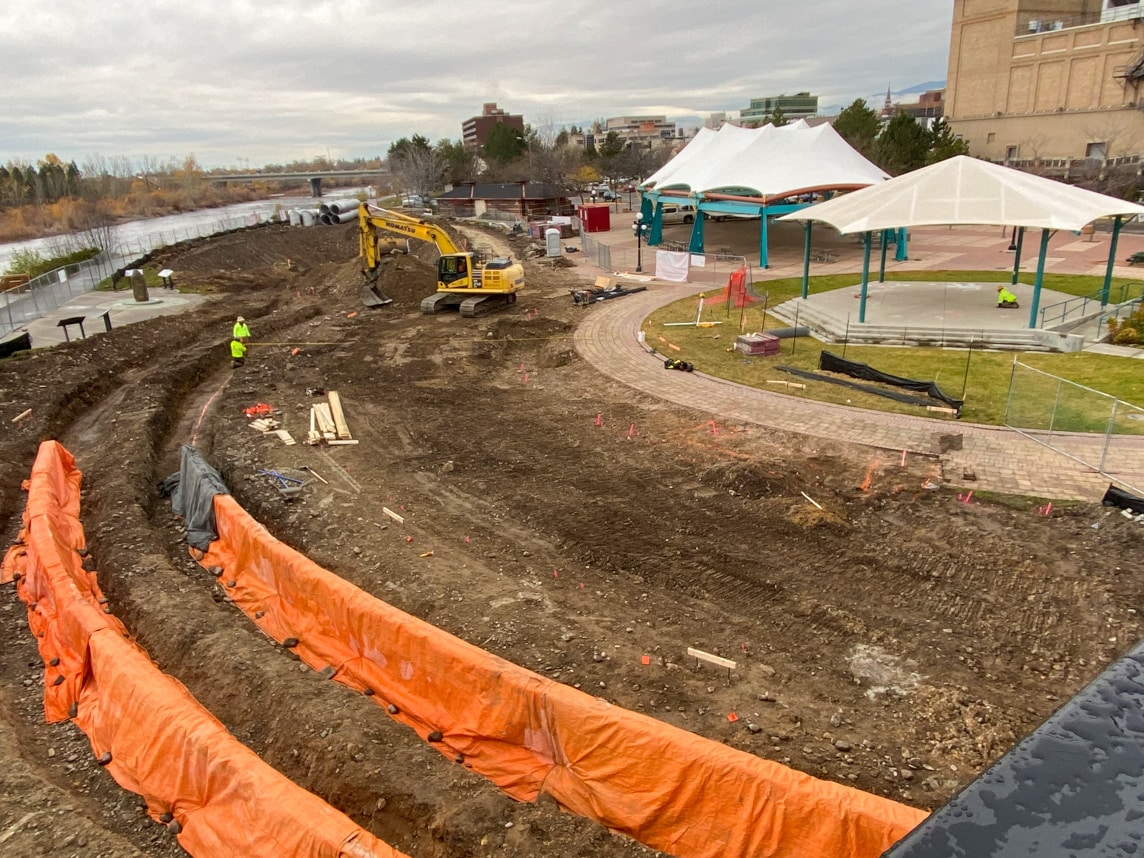
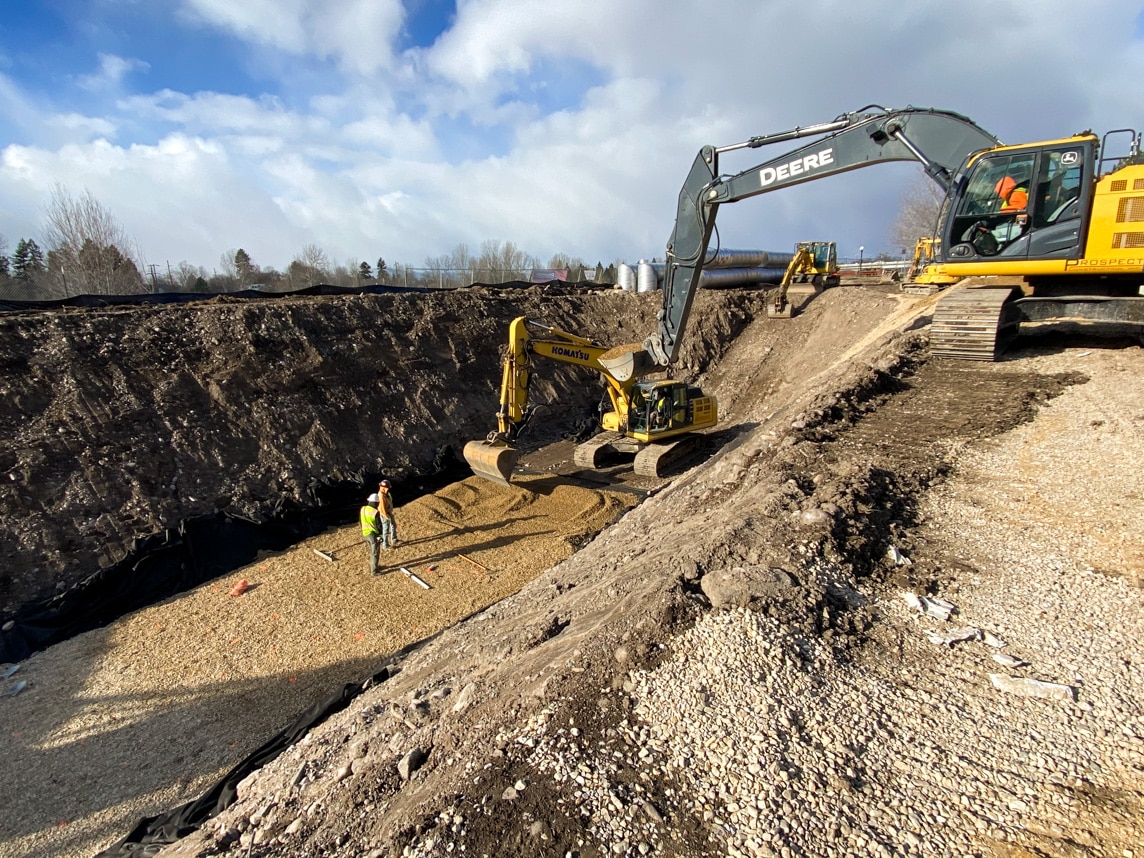
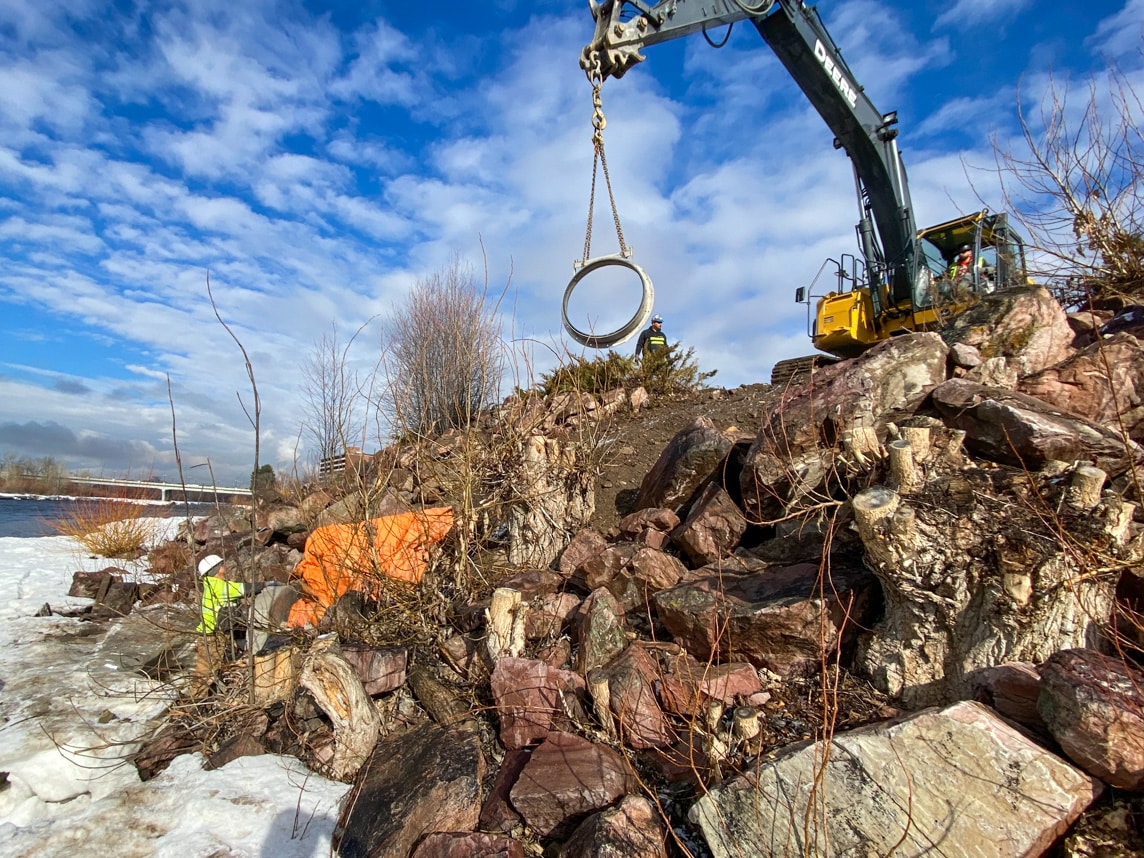
A Two-Phased Stormwater Project
We separated the project into two phases: first, remove larger particles of sediment and debris and then second, capture and filter other contaminants.
The first phase included installing a hydrodynamic separator (HDS) to provide pretreatment and removal of sediment, trash, oil, and grease. The HDS unit was installed upstream of the outfall, where it intercepts the storm main and separates large contaminants from runoff during storm events.
The second phase included a stormwater infiltration gallery, which diverts what is known as the “first flush” of runoff from the downtown basin into a grid of perforated pipes. It contains the highest concentration of pollutants and is the most important to capture when improving water quality. The infiltration gallery allows the first flush to slowly percolate through native soils, providing filtration and adsorption of pollutants through native soils before reaching underlying groundwater. The HDS unit installed in phase 1 removes sediment and debris from runoff, preventing clogging and build-up in the infiltration gallery.
Learn more about our stormwater work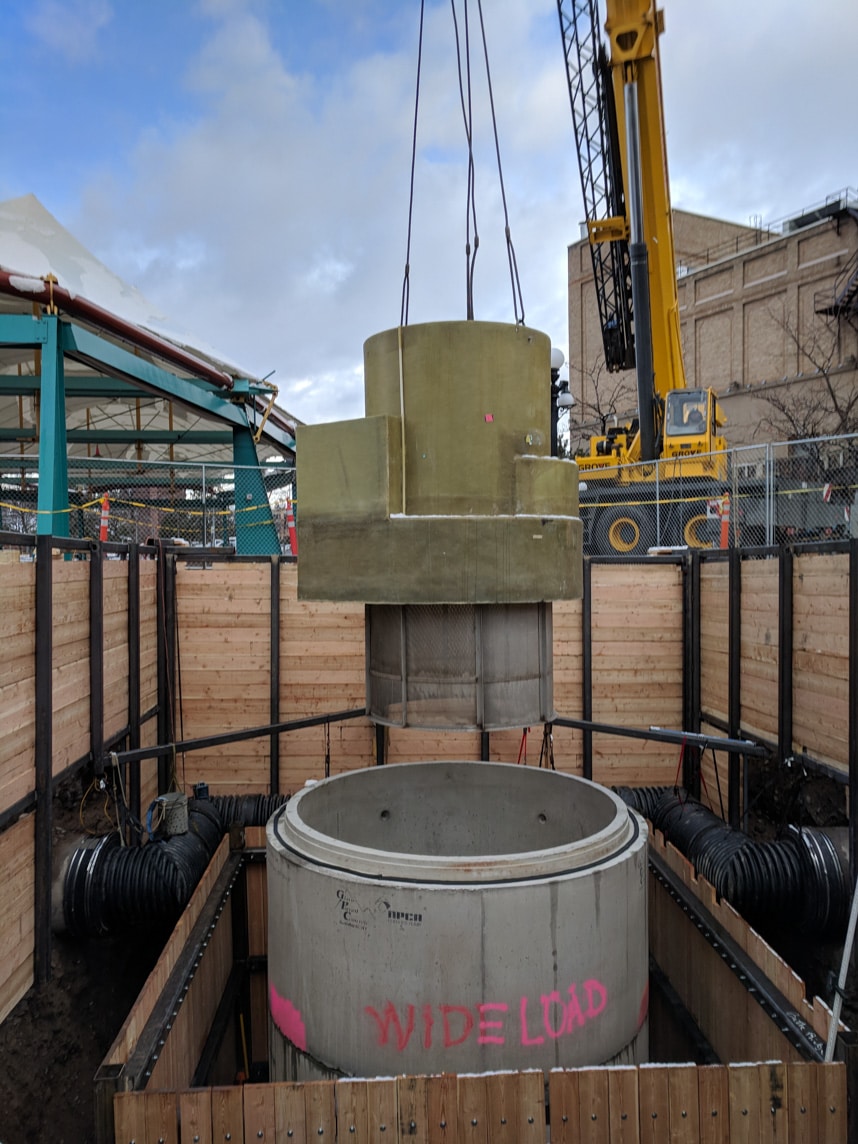
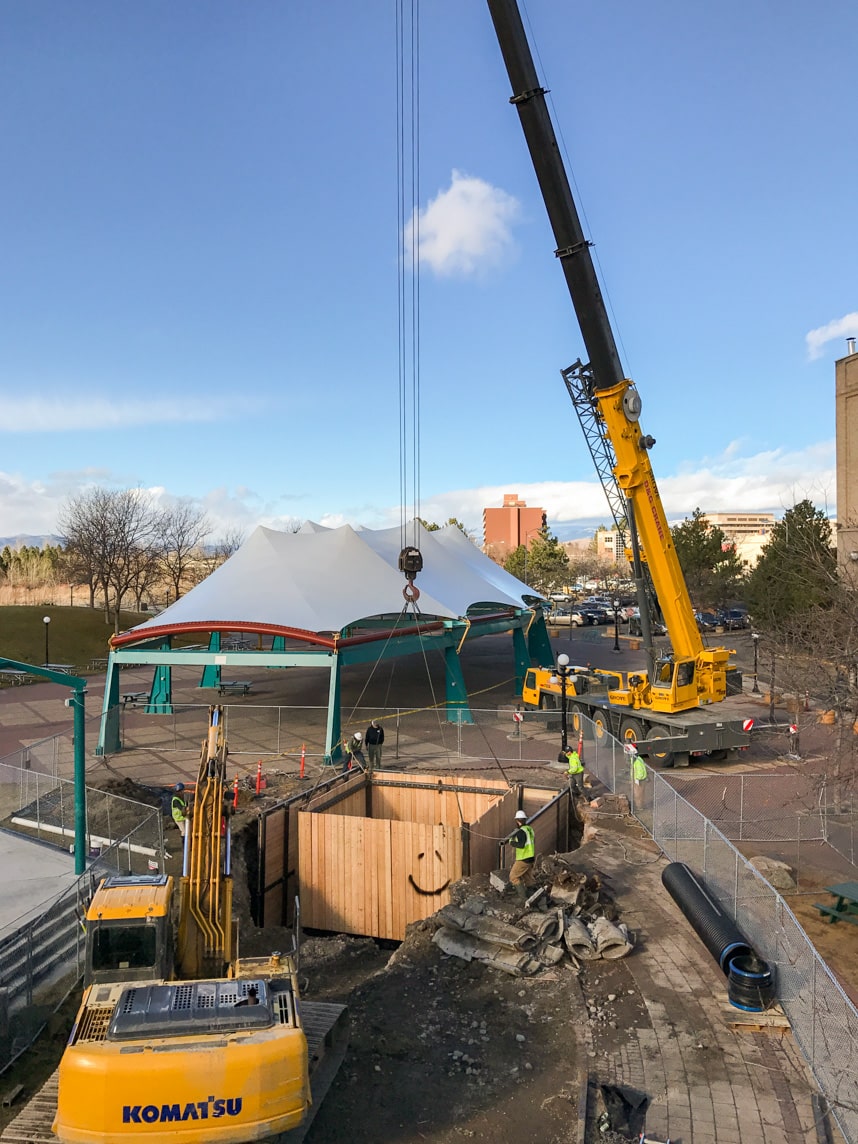
Stakeholders Add a Park Improvements Project
The infiltration gallery was installed directly beneath the grassy area of Caras Park, and since the construction was already impacting this area, stakeholders decided to add a park improvements project to reduce construction costs and minimize the park’s closure time.
Morrison-Maierle, in collaboration with Field Studio Landscape Architects, designed improvements to Caras Park that included several unique features and upgrades. We designed a new 10-foot multi-use riverfront trail to connect the overlook at Brennan’s Wave to the main pavilion. The design provides better circulation and capacity for traffic through the park.
We completely restructured amphitheater seating around the existing bandshell, providing new ADA seating areas, raised concrete benches with additional lawn space, and shade sails. To further enhance the space, we added new lighting, decorative concrete seating, and electrical stations for food trucks. The new multi-use lawn area now provides green open space for activities
As a result of the project, there is improved water quality at the stormwater outfall to the Clark Fork River, benefiting recreators, aquatic life, and Missoula community members alike.
Learn more about our stormwater workRelated Projects

City of Sidney Stormwater Master Plan
Morrison-Maierle helped the City of Sidney with its its first-ever Storm Water Master Plan, creating a guide for improving infrastructure, managing flood risks, and planning capital improvements.

Comprehensive Stormwater Quality Plan
The City of Missoula developed a Comprehensive Stormwater Quality Plan—a strategic blueprint to better manage runoff and protect local water resources.

Meadows Stormwater Flood Mitigation
The Meadows Stormwater Flood Mitigation project addressed complications resulting from years of severe flooding events in Sidney, MT.